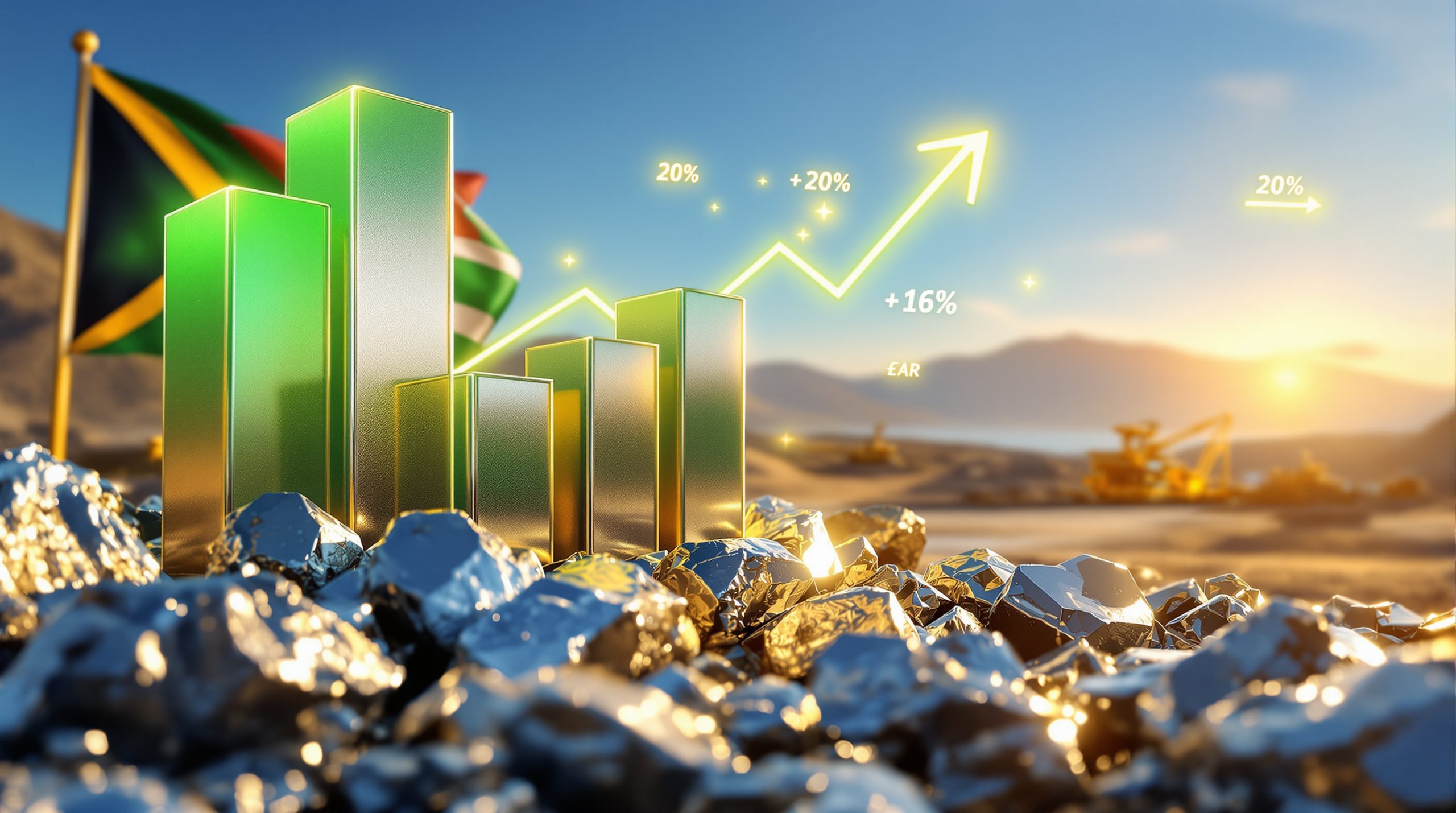Understanding the Current Gold and Silver Market Dynamics
Recent Price Movements in Precious Metals
Gold's ascent to $100,000 per kilogram represents a milestone in its role as a monetary safe haven, driven by central bank policies and macroeconomic uncertainty. The European Central Bank's rapid interest rate cuts to 2.25% exacerbated currency fluctuations, contributing to gold's €93,000/kg peak in euro terms. Silver's 15% two-day plunge following tariff announcements underscores its sensitivity to industrial demand shocks, though specialists emphasize such volatility is intrinsic to silver markets. The subsequent 6-7% gold retracement and partial recovery highlight how macroeconomic policy shifts create buying opportunities for disciplined investors. For a comprehensive gold market analysis 2024-2025, investors should consider both short and long-term indicators.
Factors Influencing Current Market Volatility
The Trump administration's revised tariff policy—imposing immediate 125% tariffs on Chinese imports while delaying other implementations by 90 days—triggered a $6 trillion global equity selloff before partial recovery. This policy uncertainty interacts with divergent monetary approaches: the Federal Reserve maintains higher rates compared to the ECB's aggressive cuts, creating cross-currency pressures on dollar-denominated metals. Housing market corrections (5-15% in U.S. regions and manipulated European markets) further compound systemic risks, driving capital toward tangible assets.
Why Are Gold and Silver Valuable Long-Term Investments?
Historical Significance of Precious Metals
Silver's 6,000-year history as a monetary medium and industrial material provides unique dual demand drivers, while gold's 97% correlation with global M2 growth over 50 years confirms its inflation-hedging credentials. Unlike fiat currencies, their elemental properties prevent arbitrary supply expansion—a critical factor as global debt-to-GDP ratios exceed 356%. During the 2008 crisis, gold outperformed equities by 168%, demonstrating crisis-alpha characteristics that portfolio theory cannot replicate with synthetic instruments. Recent global commodities insights suggest that precious metals continue to serve as monetary anchors amid geopolitical tensions.
Physical Ownership Benefits
Bart Brands emphasizes that physical possession eliminates counterparty risk inherent in digital assets and paper contracts, particularly crucial as $82 trillion in global derivatives remain under-collateralized. Gold's negative beta (-0.2) to equities enhances portfolio efficiency, while its 15.7% annualized volatility is lower than most commodities, contradicting perceptions of extreme risk. For eurozone investors, gold's 9.4% annualized returns since 1999 outpace both bonds and inflation, preserving purchasing power through negative-rate environments. Understanding the difference between investing vs. speculating is crucial when approaching gold and silver markets.
How Should Investors Approach Market Volatility?
Strategies for Seasoned Investors
The 30% metals drawdown during March 2020 provides a blueprint: maintaining 20-30% cash reserves enables opportunistic accumulation during liquidity crises. Dollar-cost averaging mitigates timing risk, with historical data showing 300bps higher annual returns versus lump-sum approaches in volatile markets. Options strategies like bull call spreads allow participation in upside while limiting downside—critical given silver's 34.9% annualized volatility. For the latest market projections, investors can review the 2025 gold market outlook.
Advice for New Precious Metals Stackers
Brands advises newcomers to "stack hard" regardless of price, noting that monthly purchases during the 2011-2015 bear market yielded 63% returns by 2020. Allocating 5-10% of savings to metals, while keeping emergency liquidity, balances wealth preservation and crisis preparedness. Authentication protocols (specific gravity tests, Sigma machines) are essential given counterfeit bars comprise 2-5% of retail markets. Following investing rules for long-term success can help investors maintain discipline during market fluctuations.
Are We Heading Toward a Recession?
Warning Signs in the Global Economy
The U.S. Treasury yield curve inversion (103 weeks as of Q2 2025) has preceded 7/7 past recessions, while eurozone PMIs (47.3) signal contraction. Housing markets show fragility: Dutch-German border price disparities of 50% reveal artificial valuations, while U.S. mortgage delinquencies rose 18% YoY. Corporate BBB bond spreads widening to 238bps indicate mounting default risks.
Potential Recession Severity
The ECB's emergency rate cuts suggest policymakers anticipate GDP contractions exceeding 2008 levels. With global debt service ratios at 19.7% of GDP (vs. 14.3% pre-2008), even 100bps rate cuts may insufficiently stimulate credit markets. Brands warns of "Great Financial Crisis-type" cascading defaults given $15 trillion in zombie company debt.
How Might Tariffs Impact the Economy and Precious Metals?
Potential Economic Consequences
The 125% Chinese tariffs could elevate U.S. consumer prices by 4.7% annually based on 2018-2019 trade war data. While reshoring may add 1.2 million jobs, the Tax Foundation estimates net GDP losses of $83 billion over a decade. Proposed IRS restructuring and VAT-style import taxes could disproportionally impact low-income households by 6-9%.
Impact on Precious Metals Markets
Post-tariff gold volatility (VIXGOLD at 18.7 vs. 12.4 pre-announcement) reflects hedging demand against currency wars. Silver's industrial demand (54% from electronics/photovoltaics) faces risks, but substitution effects in solar cells (CuInGaSe2 alternatives) remain limited below $35/oz. Historical analysis shows metals outperforming equities by 22% during prolonged trade conflicts. The live price charts at Kitco provide real-time data for monitoring market reactions to policy changes.
FAQs About Gold and Silver Investing
What should new investors know about silver volatility?
Silver's 15% daily swings stem from thinner markets—$5.8 billion daily liquidity vs. gold's $145 billion—magnifying macro shocks. Brands advises framing volatility as "discount periods," noting 2013's 36% crash preceded a 298% decade-long rally.
How much liquidity should precious metals investors maintain?
Maintaining 20% cash reserves allows exploiting 30% drawdowns like March 2020, when silver hit $11.94/oz. This buffer should cover 6-12 months of expenses given potential job market disruptions. For current market updates and trends, the Perth Mint investor information offers valuable resources and insights.
How to Get Started with Precious Metals Investing
Choosing the Right Products
1oz Gold Maple Leafs (0.9999 purity) and 100oz LBMA-approved bars offer optimal liquidity-premium ratios. Avoid numismatics; their 25-40% premiums underperform bullion during crises.
Storage Considerations
Allocated storage through providers like Gold Republic combines insurance (0.5% annually) with instant liquidity. Home safes require UL Class 3 ratings and discrete installation to mitigate $650 million annual burglary losses.
Building a Systematic Investment Plan
Automating monthly purchases (e.g., 5% salary allocation) enables behavioral consistency. Rebalancing when gold/silver ratios exceed 80:1 optimizes long-term returns through mean reversion.
Expert Insight: "If you aren't invested, it doesn't matter what the price is. You have to be invested in gold and silver… The recession that is coming could be a Great Financial Crisis type of recession." – Bart Brands, Precious Metal Specialist at Gold Republic.
Conclusion
The interplay of monetary policy, trade tensions, and recession risks creates both challenges and opportunities in precious metals markets. Historical precedents and quantitative models suggest maintaining 10-15% portfolio allocation to physical gold and silver, supplemented by strategic cash reserves. As central banks escalate currency interventions, metals' role as non-correlated assets becomes paramount. Investors must balance volatility tolerance with long-term fundamentals, recognizing that today's price dislocations often seed tomorrow's wealth preservation.
Want to Spot the Next Major Mineral Discovery?
Stay ahead of the market with instant notifications on significant ASX mineral discoveries through Discovery Alert's proprietary Discovery IQ model, transforming complex gold and silver market data into actionable investment opportunities. Explore historic examples of exceptional market returns by visiting the Discovery Alert discoveries page and begin your 30-day free trial today.




